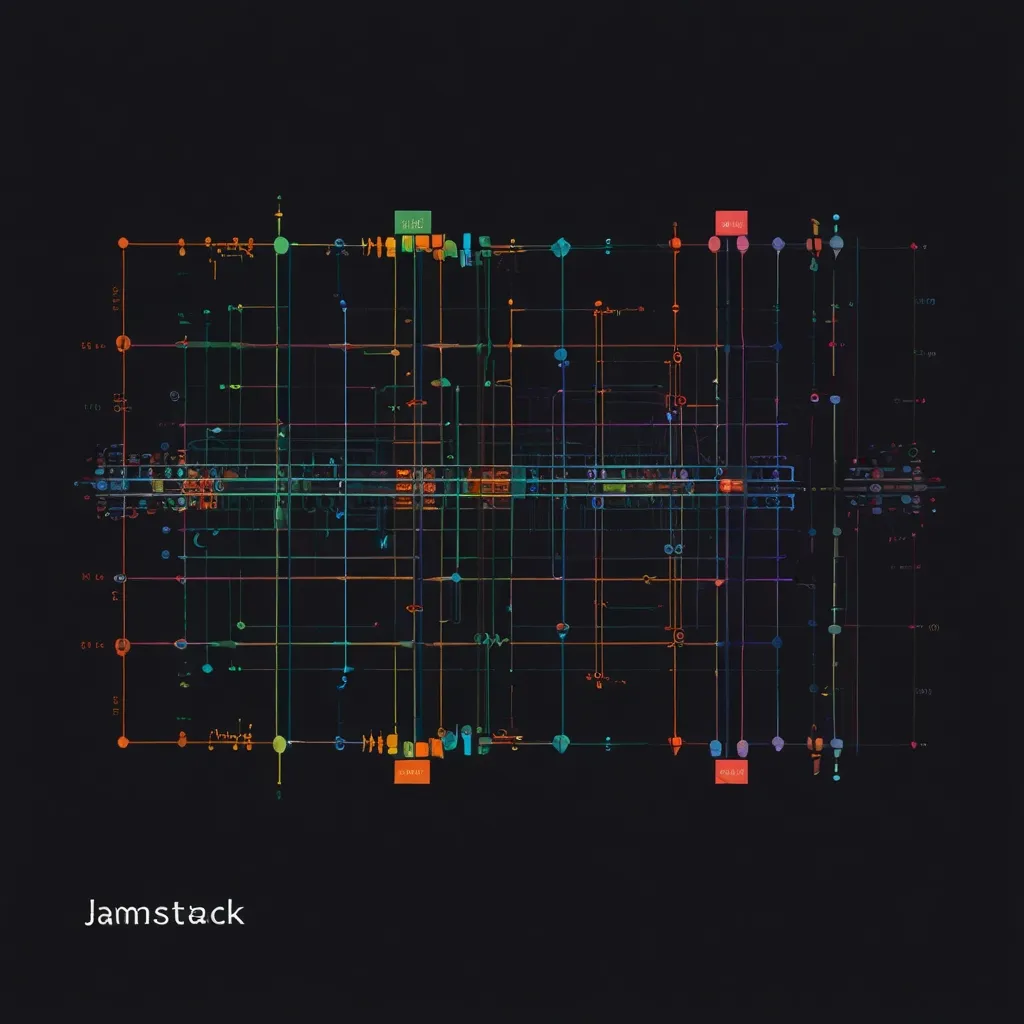JavaScript’s handling of dates and times has been a thorn in developers’ sides for years. The Date object, while useful, often feels clunky and outdated. That’s where the Temporal API comes in. It’s a fresh approach to working with dates and times in JavaScript, and it’s set to change the game.
I’ve spent countless hours battling with timezone issues and wrestling with date calculations. The Temporal API promises to make those headaches a thing of the past. It’s not just an improvement; it’s a complete overhaul of how we think about time in our code.
Let’s dive into what makes Temporal so exciting. At its core, it introduces new types that are purpose-built for different aspects of temporal logic. There’s PlainDateTime for working with dates and times without worrying about timezones, ZonedDateTime for when you need that timezone precision, and Duration for measuring spans of time.
Here’s a quick example of how you might use PlainDateTime:
const birthday = Temporal.PlainDateTime.from({
year: 1990,
month: 5,
day: 15,
hour: 9,
minute: 30
});
console.log(birthday.toString()); // Output: 1990-05-15T09:30:00
It’s clean, it’s readable, and it just makes sense. No more puzzling over whether months are zero-indexed or if the year is represented by two digits or four.
But Temporal isn’t just about making things easier to read. It’s about making them more accurate and flexible too. Take timezone handling, for instance. With the current Date object, working across timezones can be a real pain. Temporal makes it a breeze:
const nyEvent = Temporal.ZonedDateTime.from({
timeZone: 'America/New_York',
year: 2023,
month: 12,
day: 31,
hour: 23,
minute: 59
});
const tokyoTime = nyEvent.withTimeZone('Asia/Tokyo');
console.log(tokyoTime.toString());
// Output: 2024-01-01T13:59:00+09:00[Asia/Tokyo]
Just like that, we’ve converted a New Year’s Eve event in New York to its equivalent time in Tokyo. No need for external libraries or complex calculations.
One of the things I’m most excited about is Temporal’s support for different calendar systems. Not everyone uses the Gregorian calendar, and it’s high time our programming languages reflected that diversity. With Temporal, you can work with Islamic, Hebrew, or Chinese calendars just as easily as the Gregorian:
const islamicDate = Temporal.PlainDate.from({
calendar: 'islamic',
year: 1445,
month: 6,
day: 1
});
console.log(islamicDate.toString());
// Output: 1445-06-01[u-ca=islamic]
const gregorianEquivalent = islamicDate.withCalendar('iso8601');
console.log(gregorianEquivalent.toString());
// Output: 2023-12-14
This kind of flexibility is going to be a game-changer for developers working on globally-oriented applications.
But it’s not just about adding new features. Temporal also aims to fix some of the quirks and inconsistencies that have plagued JavaScript’s date handling for years. For example, the notorious “month zero” problem (where January is represented by 0 in the current Date object) is gone. Months in Temporal are always 1-indexed, aligning with how most people think about dates.
Let’s talk about date arithmetic. If you’ve ever tried to add days or months to a date using the current Date object, you know it can be a bit of a minefield. Temporal makes these operations straightforward and predictable:
const start = Temporal.PlainDate.from('2023-03-15');
const twoWeeksLater = start.add({ weeks: 2 });
console.log(twoWeeksLater.toString()); // Output: 2023-03-29
const sixMonthsAgo = start.subtract({ months: 6 });
console.log(sixMonthsAgo.toString()); // Output: 2022-09-15
No more off-by-one errors or unexpected results when your calculations cross month or year boundaries.
One of the aspects of Temporal that I find particularly powerful is its Duration type. It allows for precise measurements of time intervals, which can be incredibly useful for things like performance monitoring or calculating time differences:
const start = Temporal.Now.instant();
// ... some operation ...
const end = Temporal.Now.instant();
const duration = start.until(end);
console.log(`Operation took ${duration.total('milliseconds')} ms`);
This level of precision and ease of use is something that’s been sorely missing from JavaScript’s native date handling capabilities.
Now, you might be wondering about backwards compatibility. After all, we can’t just throw out all the existing code that uses the Date object. The good news is that Temporal is designed to coexist with Date. You can easily convert between the two:
const legacyDate = new Date('2023-06-15T12:30:00Z');
const temporalInstant = Temporal.Instant.from(legacyDate);
console.log(temporalInstant.toString());
// Output: 2023-06-15T12:30:00Z
const backToLegacy = new Date(temporalInstant.epochMilliseconds);
console.log(backToLegacy.toISOString());
// Output: 2023-06-15T12:30:00.000Z
This interoperability means you can start using Temporal in your projects without having to rewrite everything at once.
One area where I think Temporal really shines is in its handling of recurring events. If you’ve ever tried to implement something like “every second Tuesday of the month” using the current Date object, you know it can be a real headache. Temporal makes this kind of complex scheduling much more manageable:
const start = Temporal.PlainDateTime.from('2023-01-01T09:00');
const end = Temporal.PlainDateTime.from('2023-12-31T17:00');
const secondTuesdays = Temporal.PlainDateTime.from(start).until(end, {
largestUnit: 'month'
}).filter(date => date.dayOfWeek === 2 && Math.floor((date.day - 1) / 7) === 1);
console.log(secondTuesdays.map(date => date.toString()));
// Output: ['2023-01-10T09:00:00', '2023-02-14T09:00:00', ...]
This kind of functionality opens up new possibilities for building sophisticated scheduling and calendar applications.
Another aspect of Temporal that I find particularly useful is its built-in parsing capabilities. With the current Date object, parsing date strings can be unreliable and often requires additional libraries. Temporal provides robust parsing out of the box:
const date = Temporal.PlainDate.from('2023-06-15');
const time = Temporal.PlainTime.from('14:30:00');
const dateTime = Temporal.PlainDateTime.from('2023-06-15T14:30:00');
console.log(date.toString()); // Output: 2023-06-15
console.log(time.toString()); // Output: 14:30:00
console.log(dateTime.toString()); // Output: 2023-06-15T14:30:00
This consistent and reliable parsing can save a lot of headaches, especially when dealing with user input or data from external sources.
One of the challenges I’ve often faced in my projects is dealing with time-based access control. For example, determining if a user’s subscription is still active or if a time-limited token has expired. Temporal makes these kinds of checks straightforward:
const subscriptionStart = Temporal.PlainDateTime.from('2023-01-01T00:00');
const subscriptionDuration = Temporal.Duration.from({ months: 6 });
const subscriptionEnd = subscriptionStart.add(subscriptionDuration);
const now = Temporal.Now.plainDateTimeISO();
if (now > subscriptionEnd) {
console.log('Subscription has expired');
} else {
const remainingTime = subscriptionEnd.since(now);
console.log(`Subscription active. ${remainingTime.days} days remaining`);
}
This kind of clear, expressive code makes it much easier to implement and maintain time-based features in your applications.
As we look to the future, it’s clear that Temporal has the potential to revolutionize how we work with dates and times in JavaScript. Its precision, flexibility, and intuitive API address many of the pain points that developers have struggled with for years.
However, it’s important to note that as of now, Temporal is still a proposal. It’s at Stage 3 in the TC39 process, which means it’s close to being finalized but could still undergo changes before it becomes an official part of the JavaScript language.
In the meantime, there are polyfills available that allow you to start experimenting with Temporal in your projects today. This can be a great way to get ahead of the curve and start reaping the benefits of this powerful new API.
As we wrap up, I want to emphasize how significant this change is. Temporal isn’t just a new feature; it’s a fundamental shift in how we think about and work with time in JavaScript. It brings the language up to par with more modern programming languages in terms of date and time handling, and opens up new possibilities for building robust, time-aware applications.
Whether you’re building a simple scheduling app or a complex system that needs to handle dates across multiple timezones and calendar systems, Temporal provides the tools you need to do it with confidence and precision.
So, as we look forward to Temporal becoming an official part of JavaScript, I encourage you to start exploring its capabilities. Play with the polyfills, experiment with its API, and start thinking about how you can use it to improve your own projects. The future of date and time handling in JavaScript is bright, and with Temporal, it’s also a lot more fun.






